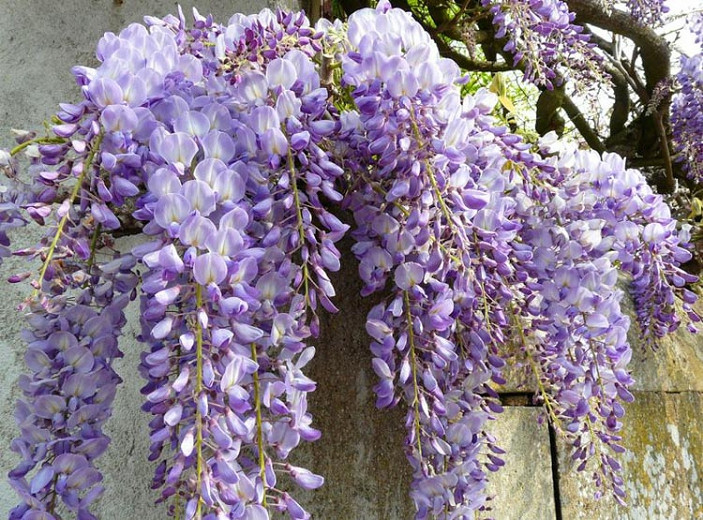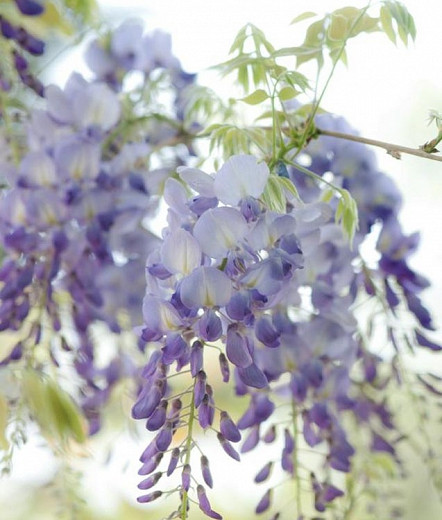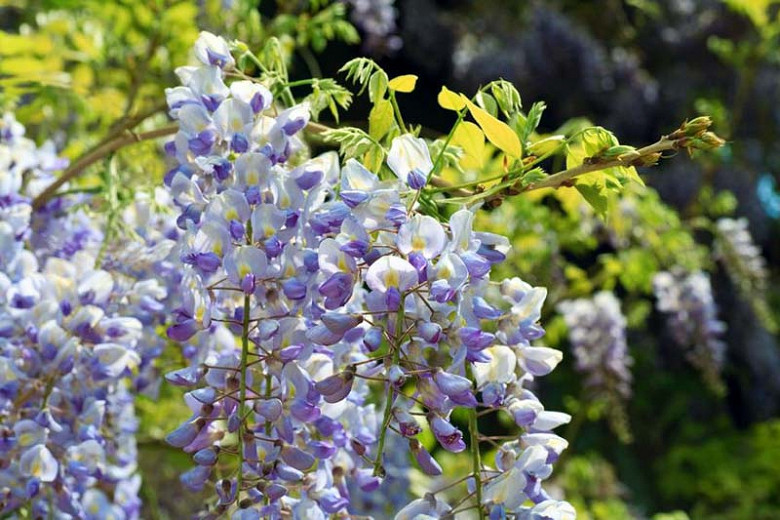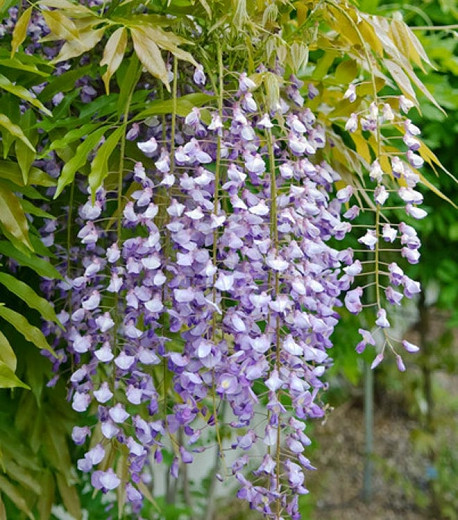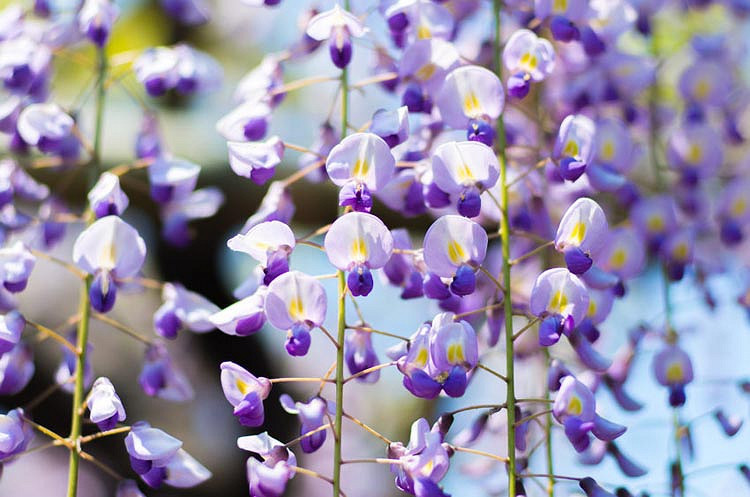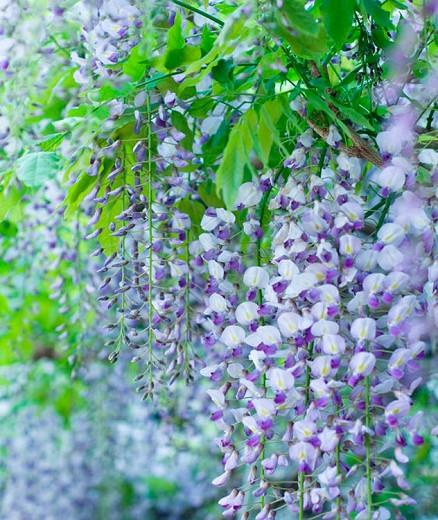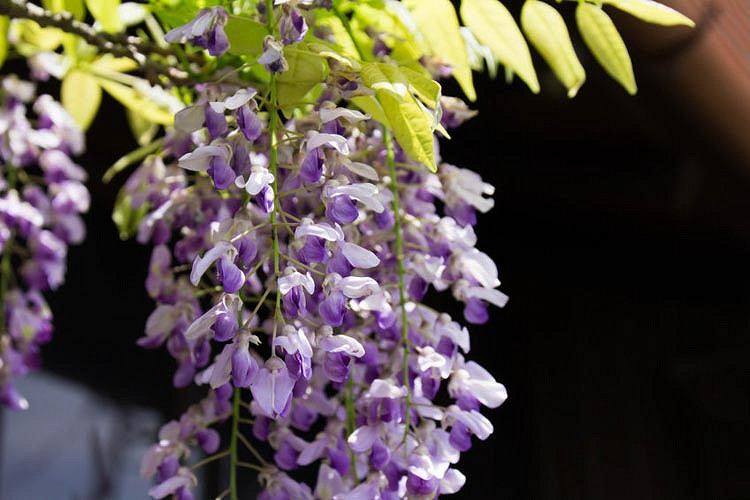Wisteria Caroline (Japanese Wisteria)
Blooming earlier than most other wisteria varieties, Wisteria ‘Caroline’ is a deciduous climber with beautiful tresses, 6-12 in. long (15-30 cm), of wonderfully fragrant, pea-like, lilac-blue flowers. Blooming in late spring or early summer, the racemes bloom more or less simultaneously, producing a dramatic floral display.
Blooming earlier than most other wisteria varieties, Wisteria 'Caroline' is a deciduous climber with beautiful tresses, 6-12 in. long (15-30 cm), of wonderfully fragrant, pea-like, lilac-blue flowers. Blooming in late spring or early summer, the racemes bloom more or less simultaneously, producing a dramatic floral display. The large flowers are followed by attractive, bean-like pods, which ripen in late summer and may persist into winter. Equally attractive is the dense foliage of bright green, pinnate leaves with usually 11 leaflets which emerges gray-green and turns golden-yellow in fall.
- A long-lived climber, this Japanese Wisteria can grow vigorously up to 30 ft. tall (9 m).
- Thrives in full sun or part shade, in moderately fertile, medium moisture, well-drained soils. Drought tolerant. Best flower production is obtained in full sun.
- Can be grown against a house wall, arbors, pergolas, trellises, fences, or trained as a free-standing half standard. It must be sited and trained on sturdy structures which will be able to support the heavy weight of the mature Wisteria. Grow this plant around patios where the flowers can be enjoyed.
- Susceptible to foliage-chewing insects and fungal diseases, but none are significant. Deer resistant
- Needs regular pruning in order to control the size and shape of the plant and to promote flowering.
- Propagate by layering, softwood cuttings, hardwood cuttings, or grafting. Choose sites wisely because plants dislike being transplanted.
- All parts may cause severe discomfort if ingested.
- Toxic to dogs, toxic to cats, toxic to horses.
- Wisteria floribunda species is native to temperate Asia, Japan.
- Find where this species is invasive in the United States.
- If you love the spectacular beauty of wisteria, the native American species, Wisteria frutescens, is a great alternative. It is less invasive than its Asian cousins and much less likely to get out of control.
Requirements
| Hardiness | 5 – 9 |
|---|---|
| Heat Zones | 3 – 9 |
| Climate Zones | 3, 3A, 3B, 4, 5, 6, 7, 8, 9, 10, 11, 12, 13, 14, 15, 16, 17, 18, 19, 20, 21, 22, 23, 24 |
| Plant Type | Climbers |
| Plant Family | Wisteria |
| Exposure | Full Sun, Partial Sun |
| Season of Interest | Spring (Late)Summer (Early,Mid) |
| Height | 13' – 30' (3.9m – 9m) |
| Spread | 13' – 25' (3.9m – 7.5m) |
| Water Needs | Average |
| Maintenance | High |
| Soil Type | Chalk, Clay, Loam, Sand |
| Soil pH | Acid, Alkaline, Neutral |
| Soil Drainage | Moist but Well-Drained |
| Characteristics | Fragrant, Showy |
| Tolerance | Deer, Drought |
| Attracts | Butterflies |
| Garden Uses | Arbors, Pergolas, Trellises, Small Gardens, Wall-Side Borders, Walls and Fences |
| Garden Styles | City and Courtyard, Informal and Cottage |
